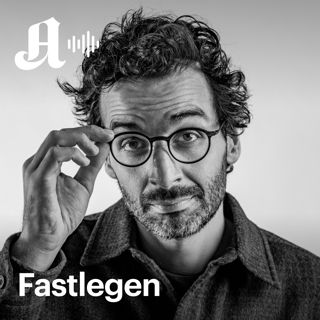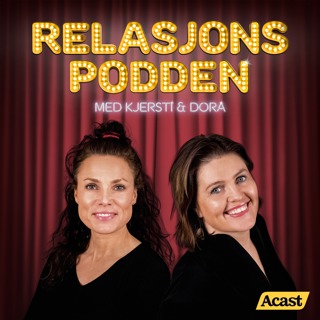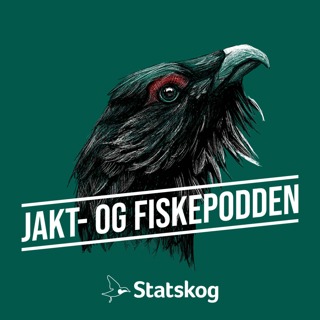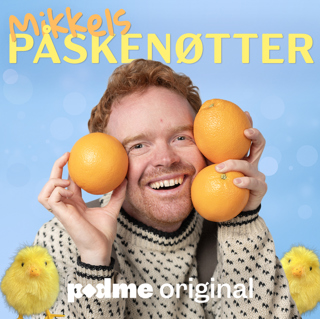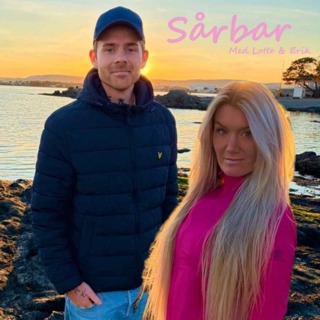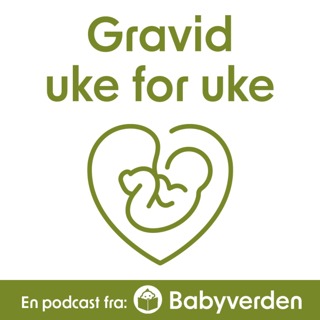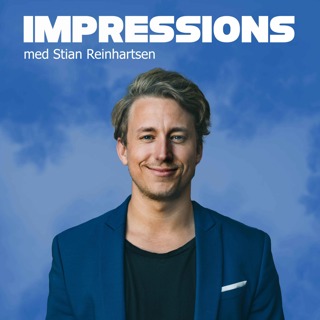
Ep. 146 Spyglass Interventions with Dr. Ravi Srinivasa and Dr. Jeff Chick
Interventional Radiologists Dr. Jeffrey Chick and Dr. Ravi Srinivasa tell us all about the latest and greatest in Spyglass Interventions, including how and where they're being used for lithotripsy, as well as upcoming training opportunities for those interested. --- SHOW NOTES In this episode, Dr. Ravi Srinivasa, Dr. Jeff Chick, and our host Dr. Michael Barraza discuss the SpyGlass Direct Visualization System and its benefits for endoscopic procedures. The doctors begin with a short introduction to previous single-use endoscopes, noting challenges like limited flexibility and incompatibility with existing hospital infrastructure. The SpyGlass overcomes these obstacles by providing on demand irrigation, four-way flexion, recording capabilities, and its own compatible ancillary devices. Dr. Srinivasa describes his use of the Spyglass in targeted biopsies and lithotripsies. Dr. Chick emphasizes that any IR can easily access and use this device, whether they are in a private, academic, solo, or hybrid practice. The minimal setup and ideal dimensions of the SpyGlass make it adaptable to many parts of the body. Finally, the doctors discuss upcoming educational content from Boston Scientific that will help IRs learn how to use the device and adapt it to their practices. --- RESOURCES Spyglass Direct Visualization System: https://www.bostonscientific.com/en-US/products/single-use-scopes/spyglass-ds-direct-visualization-system.html
2 Aug 202128min

Ep. 145 The History (and Future) of the STREAM conference with Dr. Isaacson and Dr. Bagla
We talk with STREAM meeting founders Dr. Ari Isaacson and Dr. Sandeep Bagla about its origin story, as well as what they have planned at STREAM 2021 for docs who want to learn Prostate Artery Embolization, Musculoskeletal Embolizations, and new techniques for Pain Therapy. --- SHOW NOTES In this episode, Dr. Ari Isaacson, Dr. Sandeep Bagla, and our host Dr. Michael Barraza discuss the evolution of the STREAM conference and new developments for the September 2021 meeting. Starting from 2017, the STREAM conference has attracted minimally invasive specialists seeking practical education and training. While the conference originally revolved around prostate artery embolization, it has since expanded to include topics such as genicular artery embolization, peripheral artery disease, and musculoskeletal interventions. Drs. Isaacson and Bagla highlight the wide variety of speakers, which include urologists, orthopedic surgeons, and medical malpractice lawyers. They both emphasize that this dynamic conference responds to the audience’s interests and has an overall laid-back atmosphere. This year will also be the first one to feature a case competition for students and residents. Click the link below to register for the conference and apply the BackTable promotional code! --- RESOURCES STREAM Meeting: https://www.thestreammeeting.com/ For attendings, use the code “BACKTABLE” for 50% off registration fee. For residents/fellows/students, use the code “BACKTABLETRAINEE” for 100% off registration fee.
30 Jul 202140min

Ep. 144 Direct Aspiration vs Co-Aspiration for Ischemic Stroke with Dr. Baxter and Dr. Tateshima
Dr. Sabeen Dhand talks with Dr. Blaise Baxter and Dr. Satoshi Tateshima about direct aspiration vs. co-aspiration technique when treating ischemic stroke. In this first episode of a multi-part series covering treatment of ischemic stroke they discuss radial vs. femoral approach, anatomic considerations, and tips and tricks with both techniques. --- SHOW NOTES In this episode, neurointerventional specialists Drs. Blaise Baxter, Satoshi Tateshima, and Sabeen Dhand discuss anatomical considerations and procedural techniques in direct aspiration and co-aspiration for ischemic stroke treatment. The episode starts with a discussion about radial versus femoral approaches. While femoral access remains the most common method, device innovations are making brachial and radial access more available. Dr. Baxter and Dr. Tateshima describe the use of co-aspiration in their frontline techniques. However, Dr. Tateshima notes that he prefers to use direct aspiration in posterior circulation, since the vessel size may be unknown. Dr. Baxter also emphasizes that with co-aspiration, it is important to size-match the catheter with the vessel. The choice of direct aspiration vs. co-aspiration depends largely on the location of the clot. The doctors walk through different considerations for M1, M2, and M3 strokes. Additionally, they talk about studies that compare the aspiration techniques and outcome factors such as improvements in TICI and mRS scores. Finally, they speak about the rewarding nature of stroke interventions and exciting new developments in the field. --- RESOURCES ASTER Randomized Clinical Trial: https://pubmed.ncbi.nlm.nih.gov/28763550/ SAVE vs. ADAPT for Acute Stroke: https://bmcneurol.biomedcentral.com/articles/10.1186/s12883-019-1291-9
26 Jul 202145min

Ep. 143 Better Marketing Strategies with Dianne Keen
We chat with seasoned Marketing Director Dianne Keen about the strategies that are helping doctors build sustainable practices, add service lines, and work toward patient-centered collaborative care with referring providers. Listen to learn about Dianne's "Trifecta" approach! --- SHOW NOTES In this episode, radiology marketing director Dianne Keen and our host Dr. Aaron Fritts delve into effective marketing strategies for IR practices. Throughout the episode, they emphasize the need to educate referring physicians and patients about how IR services can help them. Dianne describes her “IR Practice Growth Trifecta” as a framework for success. All three parts-- the IR, the clinic infrastructure, and the marketing talent, are essential for communicating with colleagues and patients. Dianne emphasizes the importance of finding a marketing specialist who is knowledgeable about the field of IR, and specifically, details about the procedures that they are marketing. She encourages IRs to invite marketing specialists to shadow them in the lab and the clinic to build this knowledge. To build relationships with referring doctors, it is important to identify receptive doctors in each specialty and stay in touch with them regularly. Dianne recommends focusing on the most relevant procedures to their practices, sending updates about their patients, and avoiding divisive messaging between referring doctors and their patients. Finally, we discuss marketing channels and ways to embrace new forms of patient engagement, such as social media. Overall, marketing should be well-crafted and succinct, whether it is transmitted through social media, print, or community events. --- RESOURCES Northside Radiology Associates: https://northsideradiology.com/ SIR Toolkit for “Developing Your Practice”: https://www.sirweb.org/practice-resources/toolkits/practice-development-toolkits/
19 Jul 202149min

Ep. 142 Type B Aortic Dissections with Dr. Frank Arko
Interventional Radiologist Sabeen Dhand talks with Vascular Surgeon Frank Arko about endovascular treatment of Type B Aortic Dissections (TBAD), including patient selection, appropriate sizing, and complications to avoid. --- EARN CME Reflect on how this Podcast applies to your day-to-day and earn AMA PRA Category 1 CMEs: https://earnc.me/Hv2gx0 --- SHOW NOTES In this episode, vascular surgeon Dr. Frank Arko and our host Dr. Sabeen Dhand give an overview of type B aortic dissections, which includes different methods of classifying dissections, workup and imaging, thoracic endovascular aortic repair (TEVAR), potential complications, and timeline for follow up care. Dr. Arko starts the episode by defining vocabulary terms related to aortic dissections. He describes the Stanford and DeBakey classification systems that are used to signify the location of the dissection and the method of treatment (medical management or surgical/endovascular repair). He also distinguishes between complicated/uncomplicated dissections, as well as acute/subacute/chronic dissections. When Dr. Arko discusses TEVAR, he mentions three important complications to be aware of: retrograde type A dissection, stroke, and spinal cord ischemia. He emphasizes that in the debate between optimal medical therapy and early TEVAR, more research on how to minimize these complications is needed before recommending widespread use of early TEVAR. During his walk through of the procedure, Dr. Arko also gives his insight on adjunct techniques such as PETTICOAT. Finally, the doctors discuss special considerations for patients with pleural effusion, chronic hypertension, type II thoracoabdominal aneurysms, and connective tissue disorders. --- RESOURCES INSTEAD-XL Trial- https://pubmed.ncbi.nlm.nih.gov/23922146/
16 Jul 202149min

Ep. 141 DEB vs. Balloon Angioplasty Alone for Dysfunctional HD Access with Dr. Eric Therasse
Dr. Eric Therasse discusses the results of a randomized clinical trial demonstrating benefit of drug eluting balloon (DEB) over balloon angioplasty alone in treatment of Dysfunctional Hemodialysis Access. --- SHOW NOTES In this episode, Dr. Eric Therasse, an author of the recent JVIR article titled “Safety and Efficacy of Paclitaxel-Eluting Balloon Angioplasty for Dysfunctional Hemodialysis Access,” and our host Dr. Christopher Beck discuss the study design, outcomes, and implications for further research in the use of drug eluting balloons (DEBs) for hemodialysis access. In this study, the control group received “plain old balloon angioplasty” (POBA), while the treatment group received angioplasty with Biotronik’s Passeo 18-Lux DEB. Dr. Therasse describes the angiographic endpoints, with primary endpoint as late lumen loss (to measure the degree of restenosis), and secondary endpoints as hemodialysis access failure and mortality at 12 months. He emphasizes that the clinical endpoints of this study were more significant than the angiographic endpoints because they showed that when treating dysfunctional hemodialysis access, there is decreased incidence and severity of restenosis with DEB compared with POBA. Additionally, the doctors walk through obstacles that arose during the study, which included coordination of data collection across multiple centers, low patient enrollment rate, strict exclusion criteria, and the need for re-intervention prior to the standardized follow up date. Dr. Therasse comments on the increasing use of DEBs in clinical practices and their future cost-effectiveness. He also references other helpful articles for interested listeners (linked below). --- RESOURCES Safety and Efficacy of Paclitaxel-Eluting Balloon Angioplasty for Dysfunctional Hemodialysis Access: https://www.jvir.org/article/S1051-0443(20)30961-1/fulltext Drug-Coated Balloons for Dysfunctional Dialysis Arteriovenous Fistulas: https://www.nejm.org/doi/10.1056/NEJMoa1914617?url_ver=Z39.88-2003&rfr_id=ori:rid:crossref.org&rfr_dat=cr_pub%20%200pubmed The Lutonix AV Randomized Trial of Paclitaxel-Coated Balloons in Arteriovenous Fistula Stenosis: https://www.jvir.org/article/S1051-0443(19)30817-6/fulltext
12 Jul 202152min

Ep. 140 Starting a MedTech Company 101 with Dr. Mahmood Razavi
Bryan Hartley talks with physician entrepreneur Dr. Mahmood Razavi about the essential elements of successfully starting a medtech company, as well as pitfalls to avoid. --- SHOW NOTES In this episode, serial entrepreneur Dr. Mahmood Razavi and our host Dr. Bryan Hartley discuss factors to consider when starting a medical technology company, steps of the innovation process, and fundraising strategies. Dr. Razavi recounts his path into entrepreneurship, emphasizing the importance of finding innovative mentors. He advises listeners to go beyond merely observing other successful innovators and instead, actively engaging and asking them questions. The doctors bring up the concept of filing a provisional patent in the early stages of product development, which can allow an entrepreneur to protect their intellectual property as they seek guidance from others. A critical decision point arises when an entrepreneur must decide whether or not they should establish a new product for an existing company or establish a completely new company. If the product is a different iteration of a design that already exists it might be worthwhile to innovate within the structure of an existing company. If you are creating a completely new device class that addresses a new clinical need or disease, there could be potential to start a company. The startup process requires entrepreneurs to recruit team members and raise funds. Dr. Razavi uses equity as a recruiting tool to bring business and engineering experts into the company. He also describes various methods of funding, including venture capital and strategic partnerships and the pros and cons of each.
5 Jul 202155min

Ep. 139 AV Fistula and Graft Maintenance with Dr. Ari Kramer
We talk with Vascular Access Surgeon Ari Kramer about AV Fistula and Graft Maintenance in dialysis patients from creation to long-term care, as well as tips and tricks for treating stenoses. --- SHOW NOTES In this episode, vascular access surgeon Dr. Ari Kramer and our host Dr. Chris Beck discuss the creation, management, and salvage of AV fistulas and grafts. Dr. Kramer describes the referral patterns that lead dialysis patients to his practice, citing the need to coordinate dialysis care around a common surgical practice. He works closely with nephrologists and dialysis centers to ensure quality of care and streamlined patient management. During an initial workup, Dr. Kramer includes a physical assessment and an echocardiogram to establish a baseline. The doctors discuss the pros and cons of using AV fistulas versus grafts. While AV fistulas are autogenic and carry a lower risk of infection, there is a risk that these may not mature. On the other hand, AV grafts are fully matured but they carry a higher risk of infection and require a higher intervention rate. Dr. Kramer emphasizes the importance of understanding a patient’s cardiac performance and history before selecting a method of AV access. He also schedules periodic follow-up appointments to ensure that the access site reaches maturity, which is evaluated by the Kidney Disease Outcomes Quality Initiative (KDOQI) guidelines. Dr. Kramer walks us through devices and procedures for angioplasty, stent placement, and drug coated balloon placement. Finally, he addresses strategies for managing re-stenosis and considerations for patient preferences regarding surgical revision. --- RESOURCES Kidney Disease Outcomes Quality Initiative (KDOQI) Clinical Practice Guideline for Vascular Access: 2019 Update: https://www.ajkd.org/article/S0272-6386(19)31137-0/fulltext#secsectitle0720 American Society of Diagnostic and Interventional Nephrology (ASDIN): https://www.asdin.org/page/A2 Kidney Academy (use code “backtable21” for free access): https://www.kidneyacademy.com/
2 Jul 202159min


